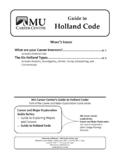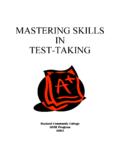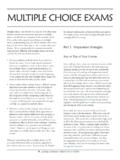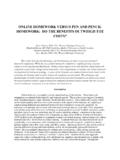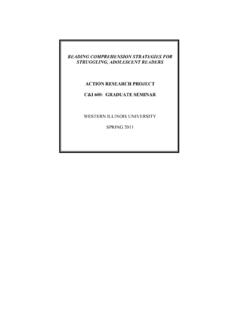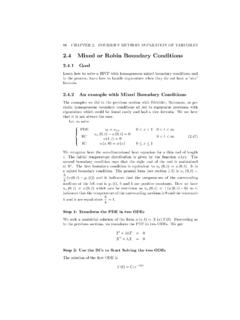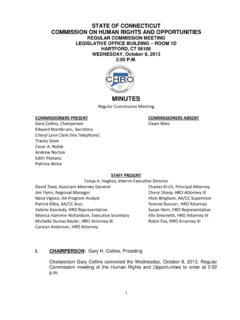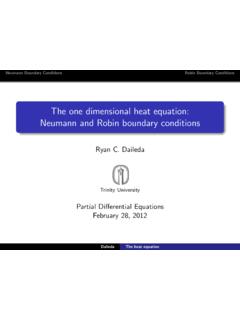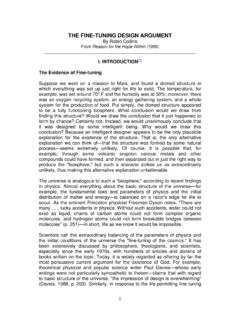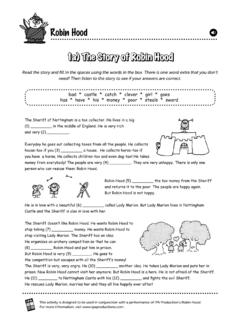Transcription of Robin Hoods: A Myth in Flux - WIU
1 66 Western Illinois Historical Review 2013 Vol. V, Spring 2013 ISSN 2153-1714 Robin Hoods: a myth in flux Justin Paonessa Robin hood has remained one of the most infamous outlaws in European history. His popularity has transcended national boundaries and his myths appear in Ireland, Scotland, Wales and England. Scholars have often wondered how Robin hood was able to remain such a prominent figure of folklore for so long without dying out as other outlaw stories have. This paper will show that the reason the Robin hood myth was able to survive the tests of time was the Storytellers ability to adapt it to any time period in which it was told. The beginning of the paper will start by examining the common themes represented in the Robin hood myths .
2 It will then move on to a discussion of source problems inherent within this myth. A discussion of Robin hood as a historical figure will then commence. Having then established the historical Robin hood , an examination of his relationships with the medieval church, political authorities, and the common man will then take place. After having established all of these essentials arguments about Robin hood it will finally be time to discuss the thesis through an example of how the myth of Robin hood was used during Henry VIII s reign in order to better represent his own ideas and policies. This adaptability is what made Robin hood s myth able to survive the tests of time, and become as famous as the King Arthur myths .
3 The time periods in which this paper will be examining the myths of Robin hood are from the early thirteenth century to the late sixteenth. While the myths seem to have been popular even before then, most of the myths currently in possession of historians are from these time periods. 67 What is a Myth? One important factor that must be established before this examination can begin is a discussion of what is meant by the myth. It makes the most sense to use the definition of both of these terms found in the Oxford Dictionary. According to this source a myth is a traditional story, especially one concerning the early history of a people or explaining a natural or social phenomenon, and typically involving supernatural beings or events.
4 A myth is different from a legend in that it is a traditional historical tale (or collection of related tales) popularly regarded as true but usually containing a mixture of fact and fiction. Using these criteria as explanations for these two terms an examination of Robin hood can now begin. Sources The primary sources that will be used for this paper are; The Gest of Robyn Hode, Death of Robin hood , The Death of Robert, Earl of Huntington, Maid Marian and Robin hood : A Romance of Old Sherwood Forest, and Robin and The King and other minor myths taken from the secondary sources that have been gathered. The myths that are being used are some of the most famous and most often adapted of all of the different myths and myths surrounding Robin hood .
5 As such, it is important to analyze them and some of the changes that may have taken place throughout the years in which they were popular. The Themes of Robin hood The Robin hood myth was not just a simple story of good triumphing over evil. The myth holds many themes that are integral to understanding why the Robin hood myth has survived. One of the main themes that the Robin hood myth possesses is the idea that justice will come to those who are corrupt in a position of power. This is the most prevalent idea within the myths and therefore must be discussed. As Maurice Keen points out, Robin hood was, an enemy of the existing order. 1 What makes this 1 Maurice Keen, The Outlaws of Medieval Myth (London: Routledge, 1961), 128.
6 68 interesting is that during this time period in history as Keen explains, Rule of Law was respected as a foundation of good Government, those who put themselves outside and against the law nevertheless became popular heroes. 2 The same people who viewed their sovereign s laws as the will of God also understood that mere men carried these laws out. Often, though the law itself was good the men placed in charge of carrying out the order were not, and corruption seems to have been common enough that those who fought against it were held up as heroes. Robin hood was not just an outlaw seeking to run from the law but a man who was trying to right the wrongs of a corrupt kingdom. Robin fought against injustices most notably of the corrupt political or religious authority figures, represented by Sheriffs of Nottingham or greedy Abbots.
7 The model of Robin bringing his own brand of justice upon the tyrannical wicked has stuck with the myth since its inception and is the glue which holds these myths together. Robin s generosity towards people of the lower orders is another major theme of the myths , while many scholars have actually identified Robin as the construction of the middle to upper aristocracy. It was as Bellamy puts it, the disenfranchised and the downtrodden that Robin hood defended and helped, with particular vindictiveness towards those corrupted by power. 3 This theme has stuck with Robin since the earliest stories of the hero when he helped out a disenfranchised Knight who would later become one his staunchest This was extremely important to the myths , as Robin s role as a defender changed often when it came to who he defended.
8 Was Robin the defender of upper aristocrats who were brought low by injustices? Or did he instead defend the common people who had a tyrannical official or even a King, such as in the case of King John? The answer to both of these questions is yes. Robin s myths often had him defending anyone who was disenfranchised during the period of the myth. Robin s generosity towards these disenfranchised men was another important theme in the many plays and sonnets about him. His willingness to spare his coin, table, or even give a membership into his Merry Men to particular just-hearted outlaws was another aspect of all the myths . 2 Keen, The Outlaws of Medieval Myth, 128.
9 3 John Bellamy, Robin hood : A Historical Inquiry (Indianapolis: Indiana University Press, 1985), 67. 4 William H. Clawson, The Gest of Robyn Hode (Toronto: University of Toronto Library, 1909), lines 83-167. 69 Robin hood has also been associated with both the woods and disguise. These two aspects are placed together for the reason that they both represent an essential theme of the outlaw plays: mystery. To many of the people living in medieval England knew that, The woods were forbidden by the King to even step foot into, Robin s refuge in these woods was in open defiance to the laws and gave the woods a mystical quality about them, even long after much of these woods had been cut down. 5 What is interesting is that the laws proclaiming that no one was allowed to hunt or enter the King s woods actually made the woods seem even more mystical once the myths had placed the outlaw inside of them.
10 The woods also represented mystery especially to those not allowed to enter them. According to John Bellamy, Woods like Sherwood Forest often had all kinds of ghost stories or other superstitions linked with them, the fact that an outlaw like Robin hood could live in them fascinated people. 6 Robin hood also possessed the uncanny accuracy of a master archer, which many scholars suspect was in part originally placed into the myth to make it seem as if, among his other crimes, he often poached It was also the favored weapon of peasants and low-born aristocrats during the time period of most of the Robin hood telling. Robin s utilization of disguise is another aspect of the myths that added to his mystique.
